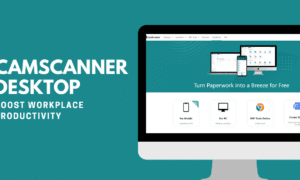Distance plays a key role in determining the final price for vehicle transportation. Longer distances generally mean higher fuel, labour, and logistical costs for the shipping provider. Clients need to understand the relationship between distance and cost in order to budget appropriately and avoid surprises. The distance-based pricing model lets you decide your vehicle transportation needs and find the most cost-effective solutions.
Preowned Auto Logistics is committed to transparent, distance-based pricing and high-quality customer service. We’ll work with you to understand your specific transportation requirements and provide accurate, upfront quotes so you can make the best decision for your needs and budget. This blog post explains how distance forms the basis of vehicle shipping costs, helping clients plan efficiently, reduce unexpected costs, and refine their transport strategies.
Why Distance Matters in Auto Transport
Longer distances require more resources, which can significantly impact the final price. Here’s how distance affects auto transport costs:
• Fuel consumption: Longer routes burn more gas, which increases fuel costs.
• Driving time: More driving hours are needed for longer distances, raising labour expenses.
• Vehicle wear and tear: Extended trips put more strain on the transport truck, requiring more maintenance and repairs.
Conversely, shorter routes may have lower total costs but can be less economical per mile due to the fixed costs associated with loading, unloading, and administrative work. To provide the most cost-effective pricing, logistics experts carefully consider the route’s efficiency, the carriers’ location, and other variables. They can also optimize costs by scheduling multiple vehicles on the same routes, reducing overhead per shipment.
Preowned Auto Logistics specializes in providing accurate, distance-based cost estimates to meet the individual needs of each auto transport customer. Their commitment to reliability and affordability ensures you get the best value, no matter the destination.
Cost Per Mile Breakdown
The longer the distance for auto transport, the more cost-effective it can be per mile. For example:
• A 200-mile trip with fixed costs like equipment setup and employee payment might cost $2.50 per mile, totalling $500.
• A 1,000-mile shipment could average $1.00 per mile, totaling $1,000.
While the cost per mile may be lower for longer distances, the total cost is often more favourable for long-haul shipping than for shorter trips. Auto transport providers optimize routes to offer more affordable prices. They group vehicles heading to similar destinations to save fuel and labour costs. Providers analyze distance, traffic patterns, and seasonal demand to provide stable, reliable customer pricing.
This strategic approach enables auto transport companies like Preowned Auto Logistics to align their cost-effective pricing with the specific needs of each customer and region.
Regional Accessibility and Route Popularity
Location shapes shipping costs significantly. Major metropolitan areas like Los Angeles or Chicago and popular routes like Florida to New York benefit from high carrier availability, leading to lower rates. These corridors allow carriers to fill trucks efficiently, spreading costs across multiple vehicles. In contrast, remote or rural areas, such as parts of Idaho or Alaska, face higher fees due to limited carrier access and fewer return trips, which increase operational costs.
Flexible logistics solutions counter these challenges. Door-to-door transport ensures convenience, while optimized routing keeps pricing competitive, even in less accessible areas.
A robust carrier network enables seamless service across urban hubs and rural regions. Customers gain tailored strategies that account for regional dynamics, ensuring fair costs and reliable delivery. This adaptability makes shipping accessible and cost-effective, regardless of location or route popularity.
Impact of Fuel Prices and Tolls
Rising fuel rates drive up expenses as carriers adjust pricing to cover costs. A 2,500-mile trip during a fuel price surge may cost significantly more than the same route under stable conditions. Tolls and state fees, common on roads like the New Jersey Turnpike, further increase costs, particularly for cross-country shipments. These external factors can add hundreds to long-haul pricing.
Transparent pricing addresses these variables. Detailed quotes reflect real-time fuel costs and tolls, ensuring clarity. By selecting fuel-efficient routes and monitoring market trends, carriers minimize cost impacts. This approach delivers predictable pricing, allowing customers to budget confidently for any distance. Logistics providers negotiate bulk fuel rates and optimize toll-heavy routes, passing savings to customers and ensuring affordability, even in volatile markets.
Transport Type: Open vs. Enclosed
Open carriers, used for standard vehicles, are cost-effective but expose cars to weather and road conditions, suiting short to medium distances. Choosing open auto transport can help customers save significantly while still ensuring efficient service for everyday vehicles. Enclosed carriers, costing 30–50% more, protect vehicles from elements, making them ideal for luxury or classic cars over long hauls where exposure risks accumulate. The added cost reflects limited space and higher operational expenses.
Logistics experts guide customers to select based on distance, vehicle value, and budget. They explain trade-offs, ensuring informed decisions. Competitive pricing for both options, tailored to trip length, ensures affordability. For example, a long-distance enclosed shipment prioritizes safety, while open auto transport saves on shorter routes. This flexibility delivers value, aligning with customer priorities and ensuring protection matches the journey’s demands.
Timeframe and Delivery Urgency
Delivery urgency drives costs, particularly for long distances. Expedited shipping, prioritizing your vehicle, requires dedicated resources, raising fees by 20–40%. For instance, rushing a car from Denver to Houston costs more than standard delivery. Flexible delivery windows enable carriers to optimize schedules, fitting vehicles into existing routes for lower costs. This approach maximizes efficiency and savings.
Preowned Auto Logistics aligns with your timeline to balance cost and speed. They recommend flexible, affordable schedules and secure priority slots for urgent needs without excessive fees. Transparent communication clarifies how timing impacts pricing, empowering cost-effective choices. Their expertise ensures efficient delivery, whether you prioritize speed or savings, across any distance, with service tailored to your schedule and budget.
Planning for the Best Rates
Early booking drives cost efficiency. Scheduling 4–6 weeks in advance allows carriers to plan routes and allocate space, securing lower rates. Due to rushed logistics and limited carrier availability, last-minute bookings incur premium pricing, especially for long-distance trips. Like summer or winter, peak seasons amplify these costs as demand outpaces supply.
Requesting quotes early locks in optimal pricing. Experts analyze needs and market conditions to offer competitive rates, even during busy periods. Planning avoids surcharges and accesses extensive carrier networks, ensuring smooth, affordable transport. This proactive strategy also allows customers to explore cost-saving options, like adjusting pickup locations or choosing off-peak times, maximizing savings and streamlining the shipping process for any distance.
Real-Life Example Scenarios
Distance’s impact varies by route. Consider these scenarios:
Boston to Miami (1,500 miles): A high-demand snowbird route averages $1.10 per mile, or $1,650 for open auto transport. Optimized routing lowers costs by grouping vehicles. Enclosed transport costs $2,300 for added protection.
Boston to NYC (215 miles): Higher per-mile costs of $2.40, totalling $516, reflect fixed expenses. Frequent Northeast shipments ensure efficiency.
Denver to Rural Montana (800 miles): Remote areas raise costs to $1.50 per mile, or $1,200, due to limited access. Strategic door-to-door service keeps pricing competitive.
These cases show that logistics providers calculate rates based on distance, route popularity, and accessibility, delivering tailored, transparent pricing.
Additional Factors Influencing Distance-Based Costs
Vehicle size and weight significantly affect costs. Larger vehicles, like SUVs or trucks, occupy more carrier space, increasing fuel and handling expenses. A compact sedan shipped 1,000 miles costs less than a heavy-duty pickup over the same distance. Seasonal demand also influences pricing. Summer and winter, driven by relocations and snowbird migrations, see higher rates, while spring or fall offer savings due to lower demand.
Carrier availability varies with distance and season. Long routes require experienced drivers, and shortages during peak times raise prices. Logistics experts maintain strong carrier relationships to ensure access, even in high demand. They also recommend cost-saving options, like terminal-to-terminal shipping, which lowers expenses for customers near transport hubs. Weather conditions, such as winter snowstorms, can delay long hauls, increasing costs if rerouting is needed. Proactive planning mitigates these risks, ensuring affordability and reliability across all distances and seasons.
Ship with Confidence
Expert logistics providers deliver reliable, distance-based pricing tailored to your needs. Their expertise in route optimization, transparent quotes, and flexible scheduling ensures cost-effective transport, whether shipping 200 or 2,000 miles. They address fuel costs, tolls, timing, and seasonal challenges with clarity, eliminating surprises. From urban to rural deliveries, open auto transport or enclosed options, they prioritize value and service.
Di
stance plays a key role in determining the final price for vehicle transportation. Longer distances generally mean higher fuel, labour, and logistical costs for the shipping provider. Clients need to understand the relationship between distance and cost in order to budget appropriately and avoid surprises. The distance-based pricing model lets you decide your vehicle transportation needs and find the most cost-effective solutions.
Preowned Auto Logistics is committed to transparent, distance-based pricing and high-quality customer service. We’ll work with you to understand your specific transportation requirements and provide accurate, upfront quotes so you can make the best decision for your needs and budget. This blog post explains how distance forms the basis of vehicle shipping costs, helping clients plan efficiently, reduce unexpected costs, and refine their transport strategies.
Why Distance Matters in Auto Transport
Longer distances require more resources, which can significantly impact the final price. Here’s how distance affects auto transport costs:
- Fuel consumption: Longer routes burn more gas, which increases fuel costs.
- Driving time: More driving hours are needed for longer distances, raising labour expenses.
- Vehicle wear and tear: Extended trips put more strain on the transport truck, requiring more maintenance and repairs.
Conversely, shorter routes may have lower total costs but can be less economical per mile due to the fixed costs associated with loading, unloading, and administrative work. To provide the most cost-effective pricing, logistics experts carefully consider the route’s efficiency, the carriers’ location, and other variables. They can also optimize costs by scheduling multiple vehicles on the same routes, reducing overhead per shipment.
Preowned Auto Logistics specializes in providing accurate, distance-based cost estimates to meet the individual needs of each auto transport customer. Their commitment to reliability and affordability ensures you get the best value, no matter the destination.
Cost Per Mile Breakdown
The longer the distance for auto transport, the more cost-effective it can be per mile. For example:
- A 200-mile trip with fixed costs like equipment setup and employee payment might cost $2.50 per mile, totalling $500.
- A 1,000-mile shipment could average $1.00 per mile, totaling $1,000.
While the cost per mile may be lower for longer distances, the total cost is often more favourable for long-haul shipping than for shorter trips. Auto transport providers optimize routes to offer more affordable prices. They group vehicles heading to similar destinations to save fuel and labour costs. Providers analyze distance, traffic patterns, and seasonal demand to provide stable, reliable customer pricing.
This strategic approach enables auto transport companies like Preowned Auto Logistics to align their cost-effective pricing with the specific needs of each customer and region.
Regional Accessibility and Route Popularity
Location shapes shipping costs significantly. Major metropolitan areas like Los Angeles or Chicago and popular routes like Florida to New York benefit from high carrier availability, leading to lower rates. These corridors allow carriers to fill trucks efficiently, spreading costs across multiple vehicles. In contrast, remote or rural areas, such as parts of Idaho or Alaska, face higher fees due to limited carrier access and fewer return trips, which increase operational costs.
Flexible logistics solutions counter these challenges. Door-to-door transport ensures convenience, while optimized routing keeps pricing competitive, even in less accessible areas.
A robust carrier network enables seamless service across urban hubs and rural regions. Customers gain tailored strategies that account for regional dynamics, ensuring fair costs and reliable delivery. This adaptability makes shipping accessible and cost-effective, regardless of location or route popularity.
Impact of Fuel Prices and Tolls
Rising fuel rates drive up expenses as carriers adjust pricing to cover costs. A 2,500-mile trip during a fuel price surge may cost significantly more than the same route under stable conditions. Tolls and state fees, common on roads like the New Jersey Turnpike, further increase costs, particularly for cross-country shipments. These external factors can add hundreds to long-haul pricing.
Transparent pricing addresses these variables. Detailed quotes reflect real-time fuel costs and tolls, ensuring clarity. By selecting fuel-efficient routes and monitoring market trends, carriers minimize cost impacts. This approach delivers predictable pricing, allowing customers to budget confidently for any distance. Logistics providers negotiate bulk fuel rates and optimize toll-heavy routes, passing savings to customers and ensuring affordability, even in volatile markets.
Transport Type: Open vs. Enclosed
Open carriers, used for standard vehicles, are cost-effective but expose cars to weather and road conditions, suiting short to medium distances. Choosing open auto transport can help customers save significantly while still ensuring efficient service for everyday vehicles. Enclosed carriers, costing 30–50% more, protect vehicles from elements, making them ideal for luxury or classic cars over long hauls where exposure risks accumulate. The added cost reflects limited space and higher operational expenses.
Logistics experts guide customers to select based on distance, vehicle value, and budget. They explain trade-offs, ensuring informed decisions. Competitive pricing for both options, tailored to trip length, ensures affordability. For example, a long-distance enclosed shipment prioritizes safety, while open auto transport saves on shorter routes. This flexibility delivers value, aligning with customer priorities and ensuring protection matches the journey’s demands.
Timeframe and Delivery Urgency
Delivery urgency drives costs, particularly for long distances. Expedited shipping, prioritizing your vehicle, requires dedicated resources, raising fees by 20–40%. For instance, rushing a car from Denver to Houston costs more than standard delivery. Flexible delivery windows enable carriers to optimize schedules, fitting vehicles into existing routes for lower costs. This approach maximizes efficiency and savings.
Preowned Auto Logistics aligns with your timeline to balance cost and speed. They recommend flexible, affordable schedules and secure priority slots for urgent needs without excessive fees. Transparent communication clarifies how timing impacts pricing, empowering cost-effective choices. Their expertise ensures efficient delivery, whether you prioritize speed or savings, across any distance, with service tailored to your schedule and budget.
Planning for the Best Rates
Early booking drives cost efficiency. Scheduling 4–6 weeks in advance allows carriers to plan routes and allocate space, securing lower rates. Due to rushed logistics and limited carrier availability, last-minute bookings incur premium pricing, especially for long-distance trips. Like summer or winter, peak seasons amplify these costs as demand outpaces supply.
Requesting quotes early locks in optimal pricing. Experts analyze needs and market conditions to offer competitive rates, even during busy periods. Planning avoids surcharges and accesses extensive carrier networks, ensuring smooth, affordable transport. This proactive strategy also allows customers to explore cost-saving options, like adjusting pickup locations or choosing off-peak times, maximizing savings and streamlining the shipping process for any distance.
Real-Life Example Scenarios
Distance’s impact varies by route. Consider these scenarios:
Boston to Miami (1,500 miles): A high-demand snowbird route averages $1.10 per mile, or $1,650 for open auto transport. Optimized routing lowers costs by grouping vehicles. Enclosed transport costs $2,300 for added protection.
Boston to NYC (215 miles): Higher per-mile costs of $2.40, totalling $516, reflect fixed expenses. Frequent Northeast shipments ensure efficiency.
Denver to Rural Montana (800 miles): Remote areas raise costs to $1.50 per mile, or $1,200, due to limited access. Strategic door-to-door service keeps pricing competitive.
These cases show that logistics providers calculate rates based on distance, route popularity, and accessibility, delivering tailored, transparent pricing.
Additional Factors Influencing Distance-Based Costs
Vehicle size and weight significantly affect costs. Larger vehicles, like SUVs or trucks, occupy more carrier space, increasing fuel and handling expenses. A compact sedan shipped 1,000 miles costs less than a heavy-duty pickup over the same distance. Seasonal demand also influences pricing. Summer and winter, driven by relocations and snowbird migrations, see higher rates, while spring or fall offer savings due to lower demand.
Carrier availability varies with distance and season. Long routes require experienced drivers, and shortages during peak times raise prices. Logistics experts maintain strong carrier relationships to ensure access, even in high demand. They also recommend cost-saving options, like terminal-to-terminal shipping, which lowers expenses for customers near transport hubs. Weather conditions, such as winter snowstorms, can delay long hauls, increasing costs if rerouting is needed. Proactive planning mitigates these risks, ensuring affordability and reliability across all distances and seasons.
Ship with Confidence
Expert logistics providers deliver reliable, distance-based pricing tailored to your needs. Their expertise in route optimization, transparent quotes, and flexible scheduling ensures cost-effective transport, whether shipping 200 or 2,000 miles. They address fuel costs, tolls, timing, and seasonal challenges with clarity, eliminating surprises. From urban to rural deliveries, open auto transport or enclosed options, they prioritize value and service.

































